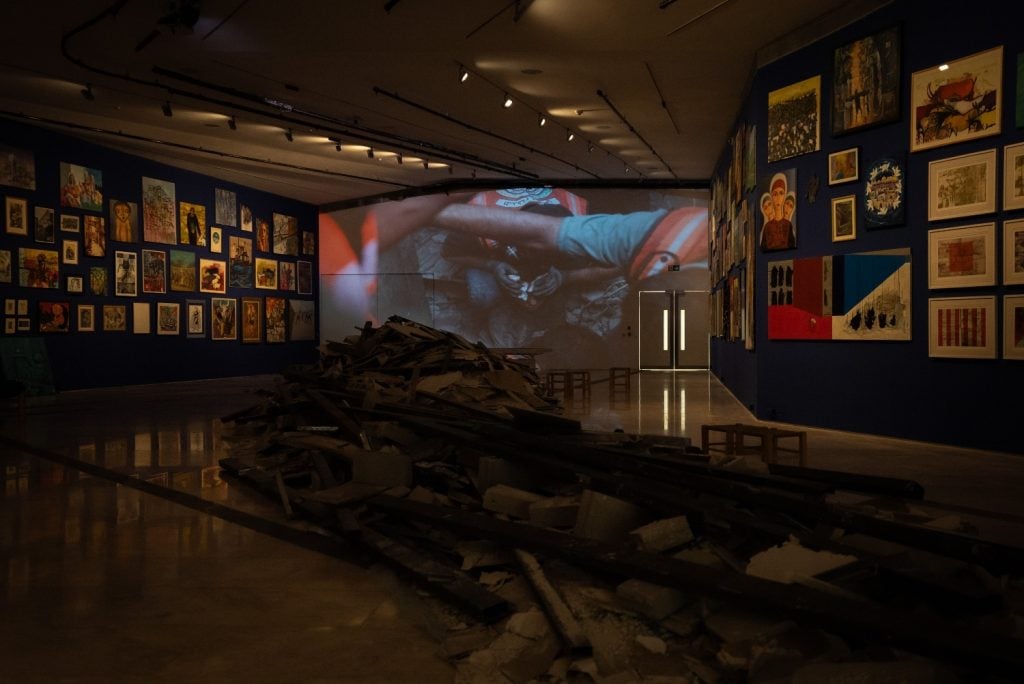Museums & Institutions
The West Bank’s Palestinian Museum Reopens After Four Months
Three concurrent shows put the spotlight on historical and contemporary Gazan artists.

Three concurrent shows put the spotlight on historical and contemporary Gazan artists.

Jo Lawson-Tancred

The Palestinian Museum in the town of Birzeit, West Bank reopened to the public last Sunday after four months of closure. The museum, which was established in 2016, is hosting an “artistic demonstration” across three gallery spaces in order to “raise our voices loudly against the massacres and systemic destruction of our beloved Gaza.”
“This is Not an Exhibition” is a showcase of over 280 works by over 100 Gazan artists on loan from private and institutional collectors from across Palestine. Some works that have been provided by the artists themselves are for sale. The show is organized by the artist-run Eltiqa Art Gallery and Shababeek, a non-profit art space, both of which have been impacted by the war on Gaza.
An airstrike demolished Eltiqa in downtown Gaza City in December and many artists from the region have seen their work damaged or destroyed. Eltiqa’s own Mohammed Al Hawajri announced on Instagram that his studio was reduced to rubble on February 18.
“This undertaking should be understood as a living breathing work to which works will be added throughout,” the museum stated, in reference to the display’s title “This is Not an Exhibition.” The show is also replete with messages of support for Gaza quoted from social media and the sound of Irsaeli drones hums constantly in the background.
In the Glass Gallery, the Gazan artist Tayseer Barakat is presenting “The Disappeared,” a series of works dating that all respond directly to war and conflict. Intended to evoke the pain of loss, the paintings are inhabited by isolated, expressionless figures that live in a dark world of ruins.
“The scenes of those carrying pictures of their missing children in the regions of the Middle East are always on my mind, whether in Palestine, Lebanon, or Syria,” the artist commented. “The recent war on the Gaza Strip has increased this strain through the loss of loved ones, friends, and siblings, especially those who have disappeared under the rubble of buildings. These thousands in Gaza have compelled me to revolve my work around the disappeared and around the concept of disappearance itself, a concept that has deeply wounded me to my core.”
The third presentation, “Women of Gaza,” harks back to Gaza’s rich cultural history by presenting historical artifacts from the region like jewellery, tatreeze embroideries, and thobes, a type of dress.
“When the Occupation so brazenly aims to silence Gaza and isolate it from the world, we must reject this and pass on Gaza’s voice,” said the museum’s director Amer Shomali.
“From Palestine with Art,” a presentation of works by Palestinian artists, is currently behind held by Palestine Museum U.S. at P21 gallery in London. The institution has also planned “Foreigners in Their Homeland,” a new survey that will take place in Palazzo Mora as an unofficial collateral event at this year’s 60th Venice Biennale.